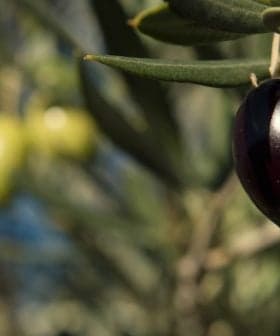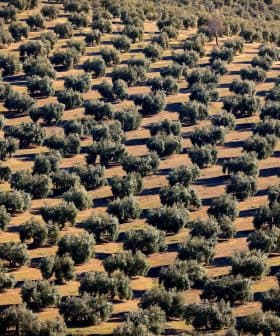Olive Oil Consumption Hits Record High in Australia

Olive oil consumption in Australia is expected to reach a record high of 51,000 tons in 2020/21, driven by increased home cooking during the Covid-19 pandemic and a growing interest in high-quality, local ingredients. Despite an increase in domestic production, imports of olive oil to Australia are expected to decrease in the coming year due to a predicted record harvest of 20,000 tons.
Olive oil consumption is estimated to reach a record-high 51,000 tons in Australia in 2020/21, just one year after the previous consumption record of 50,500 tons.
Once consumers have started using olive oil and gotten used to it and discovered the fantastic flavor, I think they’ll keep using it.
The commonwealth’s appetite for olive oil has continued to grow despite Australia entering its first recession in 30 years in September and the negative impacts of the Covid-19 pandemic.
“When Covid-19 came here, which caused the economic downturn, the people who would normally eat at restaurants couldn’t do that anymore,” Michael Southan, the CEO of the Australian Olive Association, told Olive Oil Times. “This forced those people to have to go back and cook for themselves.”
See Also:Olive Oil Consumption in Spain Increased During State of EmergencyMany consumers opted to use the money that would otherwise be spent eating out at restaurants on buying higher-quality ingredients at supermarkets, Southan said.
“They had no hesitation about buying the highest quality products they could find as well as buying locally,” he said. “This is part of why we have seen that trend of consumption increase.”
Even before the Covid-19 pandemic arrived in Australia in February 2020, demand for olive oil had steadily grown in each of the previous five years.
According to Statista, a market research firm, annual per capita olive oil consumption has nearly doubled since 2014, rising from 1.39 kilograms to 2.07 kilograms in 2019.
“There’s always been a strong interest in the Mediterranean diet, but that seems to have strengthened even more so in recent times,” Southan said. “People want to make sure they are as healthy as can be.”
Even as Australia continues to reopen and life begins to return to a new normal, Southan thinks olive oil consumption will continue to grow. He predicts that renewed demand will come from reopening the hospitality sector, and household consumption will remain steady.
See Also:Olive Council Projects Slight Decrease in Olive Oil Consumption“I think demand will continue to grow,” he said. “Once consumers have started using olive oil and gotten used to it and discovered the fantastic flavor, I think they’ll keep using it.”
“Whether they keep using it to the same quantity, I don’t know,” he added. “I think what we’ll see is people will continue to cook more at home.”
Data from the Australian Bureau of Statistics show that even before the pandemic, retail food sales had been growing steadily, increasing by 43 percent from 2010 to 2020. The onset of the pandemic accelerated this home cooking trend.
While roughly two-thirds of Australia’s olive oil consumption is fed by imports, the IOC predicts that foreign olive oil shipments to the country will fall in 2020/21 after hitting a record-high in the previous crop year.
“The reason why we probably won’t see it increase much in the coming year is that we’re expecting, potentially, our largest crop ever, especially in terms of extra virgin olive oil,” Southan said.
The first producers just started the 2021 harvest earlier this month and Southan said he would be able to make his first production estimates in the coming months.
The IOC predicts a 20,000-ton harvest for Australia in the current crop year, up from the 17,000 tons produced in 2019/20.
“Anecdotally, 2020 has been a fantastic turnaround for the whole country in terms of higher rainfall and better weather conditions,” Southan said. “As a result, the trees are now going to yield the fruit of those conditions. We’re looking at good production.”









